Graham Bell reveals if Dave Ryding can re-write history and win a medal for Team GB at the Winter Olympics
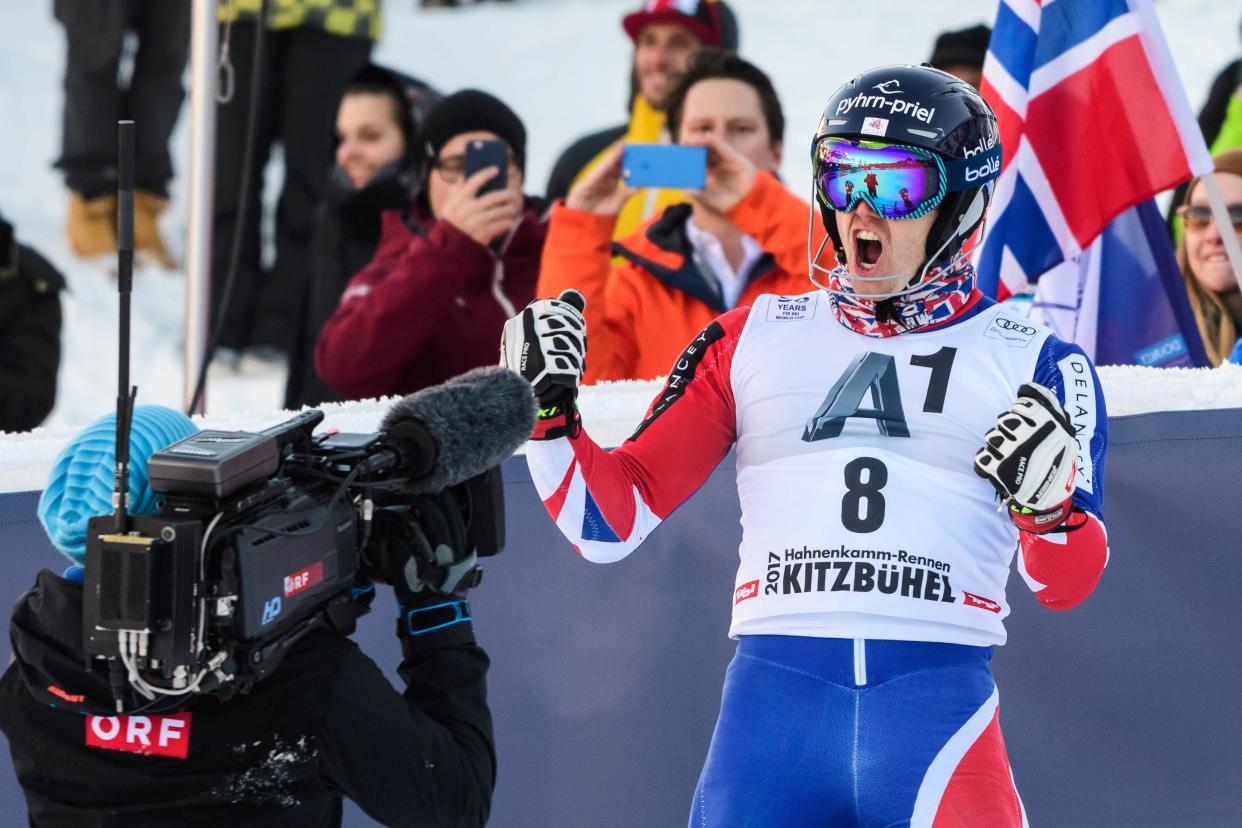
Dave Ryding’s second place in the World Cup slalom at the Hahnenkamm race in Kitzbühel was the best British performance for 35 years equalling Konrad Bartelski’s second place in Val Gardena in 1981. Unlike Bartelski’s result, Ryding’s performance was no one-off success. At the end of a stellar 2016/17 season, Ryding scored a total of six top 10 results, and is now one short of my brother Martin Bell’s record. Such was the incredible form of Ryding last season that his eleventh place at the St Moritz World Championships was seen as a slight disappointment, even though it was Britain’s best performance at a World Championship event since Finlay Mickel in Bormio 2005.
Much has been made of Ryding’s upbringing on the dry slope of Pendle in Lancashire and the fact that he did not start training on snow until he was aged 12. His success has made me totally rethink two of my preconceived ideas; that skiing skills learned on a dry slope cannot be transferred onto a real one and that you need mileage on snow from a young age to embed the motor skills into the neural pathways. It is not just me who may need to rethink, the USA skiing association recommends 6-10 year olds need at least 50 days on snow a year in order to ski at the highest level. “When I tell my story to the other World Cup racers or the media, the general reaction is one of disbelief. Austrian World Cup alpine ski racer Marcel Hirscher is one of the few who knows what a dry slope looks like, because his mother is Dutch and his dad used to teach at a dry slope in Holland in the summer – and even he can’t believe where I have come from.”
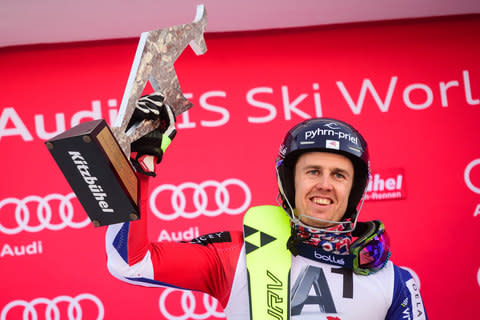
Until Ryding, all successful British alpine ski racers either grew up in Scotland, like Alain Baxter, went to school in the Alps, like my brother Martin or, had the use of a flat in a ski resort, like Chemmy Allcott. Without any of those paths available, Ryding continued to race on dry slopes until he was 21 years old. He believes those skills have helped on snow, but is also aware that in some areas he has been playing catch up for most of his career. “When I started on the Europa Cup circuit, the courses were generally flatter than World Cup pistes. I have always been good at working my skis on the flats, which is a skill that I picked up on dry slopes. When I switched to World Cup, I had to learn to ski on ice and difficult terrain, and that is why it has taken me longer to get to where I am now.”
It was not just technical skills that Ryding brought with him from dry slopes, race experience and mental strength were just as important. “Strange as it sounds, when I was leading in Kitzbuhel on the first run, I had similar emotions to when I first led a race on a dry slope. Obviously, it is a much bigger stage, but I was able to draw on those experiences and know that my emotions were totally normal.”
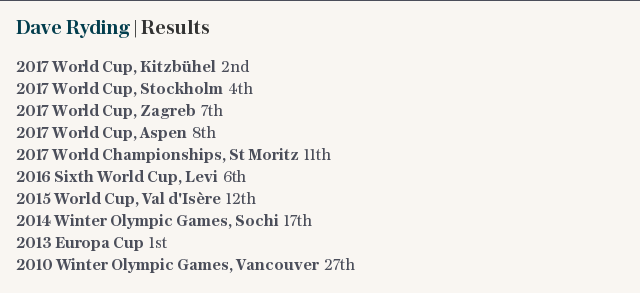
Growing up in a ski mad family, Ski Sunday was required viewing in the Ryding household, but it was Alain Baxter’s performance in the Salt Lake City 2002 Olympics that particularly caught Ryding’s imagination. “I have always looked to Alain as the guy I wanted to follow. I was 15 and had only just started racing on snow when I watched him get third at the Olympics in Salt Lake. I was a slalom skier too and wanted to follow in his footsteps.” However at 15 Ryding was far from touted as a potential British winner, placing only 49 at his first British Junior Championships race.
Ryding kept training hard and working on his technique and in four years his world ranking steadily improved from 5066 in 2002 to 484 in 2006, the year he won the British Junior title. The following year Ryding was selected to the British development team and was able to race with Baxter who was in the latter stage of his career. “I learned a lot from Alain and I still speak to him even now for advice.” In 2008, Baxter’s last British Championships, Ryding beat his childhood hero, to win the British senior title for the first time, and moved to 148 on the world ranking list.
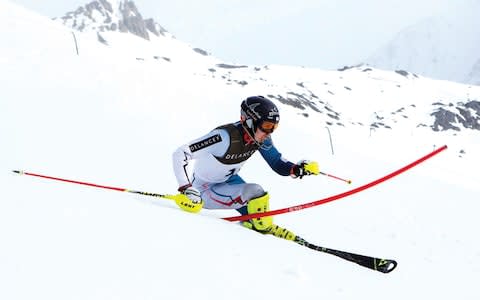
In 2010 Ryding was selected to represent Britain at the Vancouver Olympics where Ryding came 27th in slalom – a respectable result. After the Games Ryding started working with a new coach, Tristan Glasse-Davies, an ex-British race.
Glasse-Davies figured that in order to catch up with the best in the world Ryding should up his training by making use of indoor snow centres, to work on his technique. A move that would have seemed alien to racers brought up in beautiful Alpine ski resorts, but if you are from Pendle dry slope it made perfect sense. “We try not to let on how many days exactly I do indoors, and the other racers think I’m mental doing half the time I actually do.”
I think if I can keep improving there’s no reason I can’t take on the likes of Hirscher and Kristoffersen. I think they can be caught, no question
Dave Ryding
This form of training is something Ryding really enjoys. “As stupid as it sounds, the time I spend training indoors is one of my favourite times of the season. I sleep 100m from the slopes, can walk there in my ski gear and spend the next four hours working on my ski technique.”
Ryding’s hard work started to pay off in 2013 where he won the European Cup title and scored his first World Cup points with a 26th place finish in Levi. The following year, at the 2014 Sochi Olympic Games, a top 10 finish was on the cards had he not made a big mistake on a brutally difficult second run course – he ended up 17th.
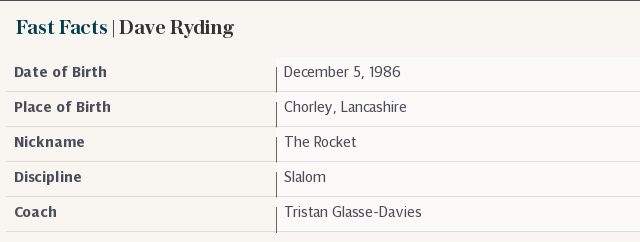
From this performance Glasse-Davies deduced that Ryding’s technique was flawed on his left-footed turns on the icier and steeper World Cup courses. Through technical training and repetitive exercise they worked to break down and rebuild the left-footed turn. “If I have something technical to work on I can just loop and loop [on an indoor slope] and it doesn’t bother me. I much prefer that to hammering down courses and trying to be fast with the technique I have.”
It was that same obsession for perfect technique that brought about Ryding’s breakthrough result in Kitzbühel last season. The Hahnenkamm downhill course is famously tough, but the slalom is also one of the most technically demanding on the tour. With Marcel Hirscher in top form, crowds of 30,000 fans would be sure to line the piste. Ryding had never finished two runs at Kitzbühel, so decided to do his homework on the 2016 race. “Fritz Dopfer won the first run in Kitzbühel in 2016, and I watched the video of him skiing it 70 times at least, just working out what he did on all the terrain changes. When I skied it I was just trying to focus on perfect technique and bringing the right intensity.” Much to Ryding’s surprise he crossed the line first. “From that moment on my life in the ski world totally changed.“
In slalom, only the fastest 30 qualify for a second run with the quickest skiing last. Hirscher, who had skied into a disappointing, by his standards, ninth place on the first run, put down a blistering time to beat on his second attempt. For each successive racer the course became more and more rutted and difficult to ski. When Ryding started Hirscher was still leading, and holding his breath in the finish area. On the rutted course Ryding could not quite match his first run performance, just finishing behind Hirscher. Most of Austria watched Ryding’s second run with baited breath, and over the next few days he found himself being mobbed by ski fans. “It was cool having people taking selfies after my training sessions. It is what you dream of as a kid, being recognised for what you do.”
Looking forward to the Olympic Games in PyeongChang, Ryding believes that focusing on each race as it comes is the best way to prepare. “I want to do well on the World Cup circuit first and foremost. It’s not like the 100m sprint where you can focus on one event, in slalom your ranking determines your start number, so if I’m skiing well on the World Cup I will come into PyeongChang full of confidence and with a good start number.”
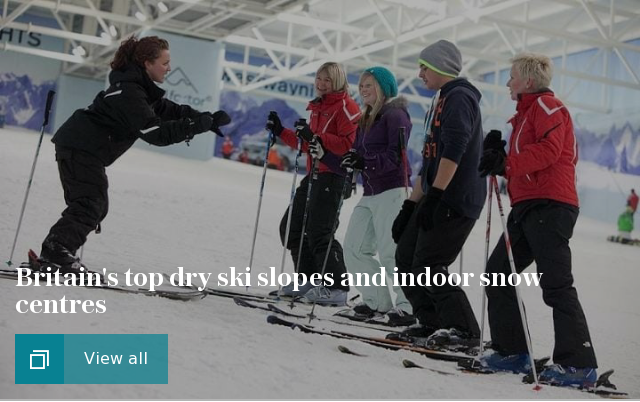
The two favourites to win gold medals are Marcel Hirscher and Henrik Kristoffersen from Norway, but Ryding believes they can be beaten. “I don’t see a limit for myself anymore. When I was a kid I dreamed of making the top 30, but I did that, then I wanted to be in the top 15, and I did that. Now I think if I can keep improving there’s no reason I can’t take on the likes of Hirscher and Kristoffersen. I think they can be caught, no question.”
Ryding’s main rivals
Marcel Hirscher, silver medalist from Sochi 2014, is a double World Champion in slalom and has won the World Cup Slalom title four times. The Olympic gold is the only achievement left for him to win.
Hendrik Kristoffersen, of Norway was the bronze medalist in Sochi, and is one of the only men who can beat a top form Hirscher.
When to watch Ryding at the Winter Olympics
Men’s slalom qualifying and finals, February 22 2018


